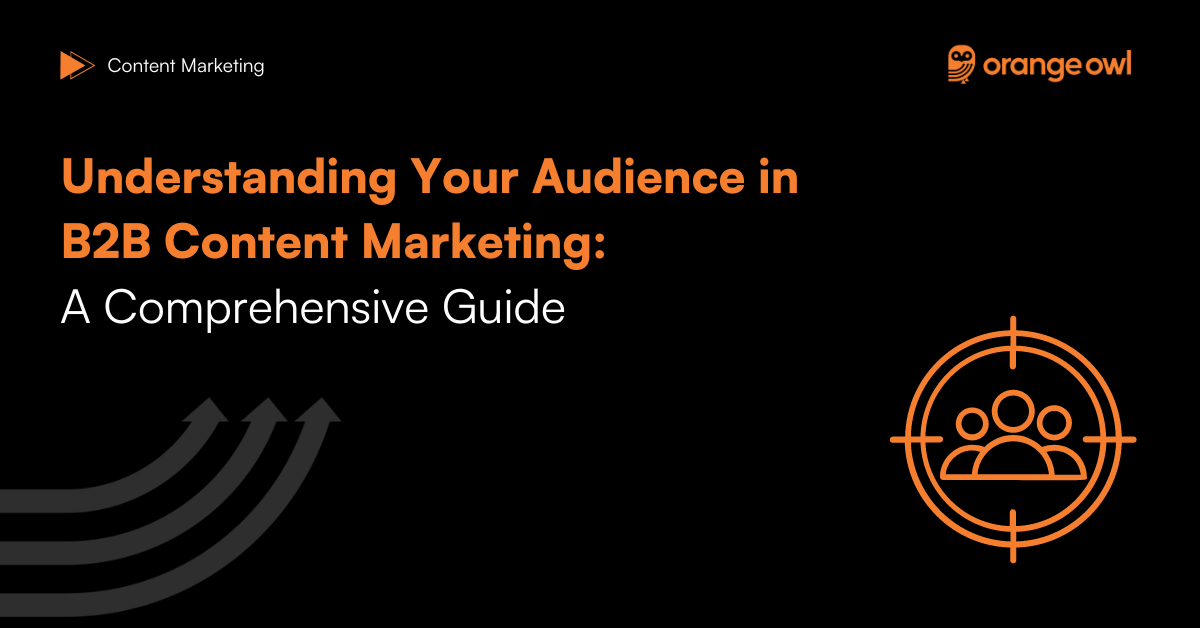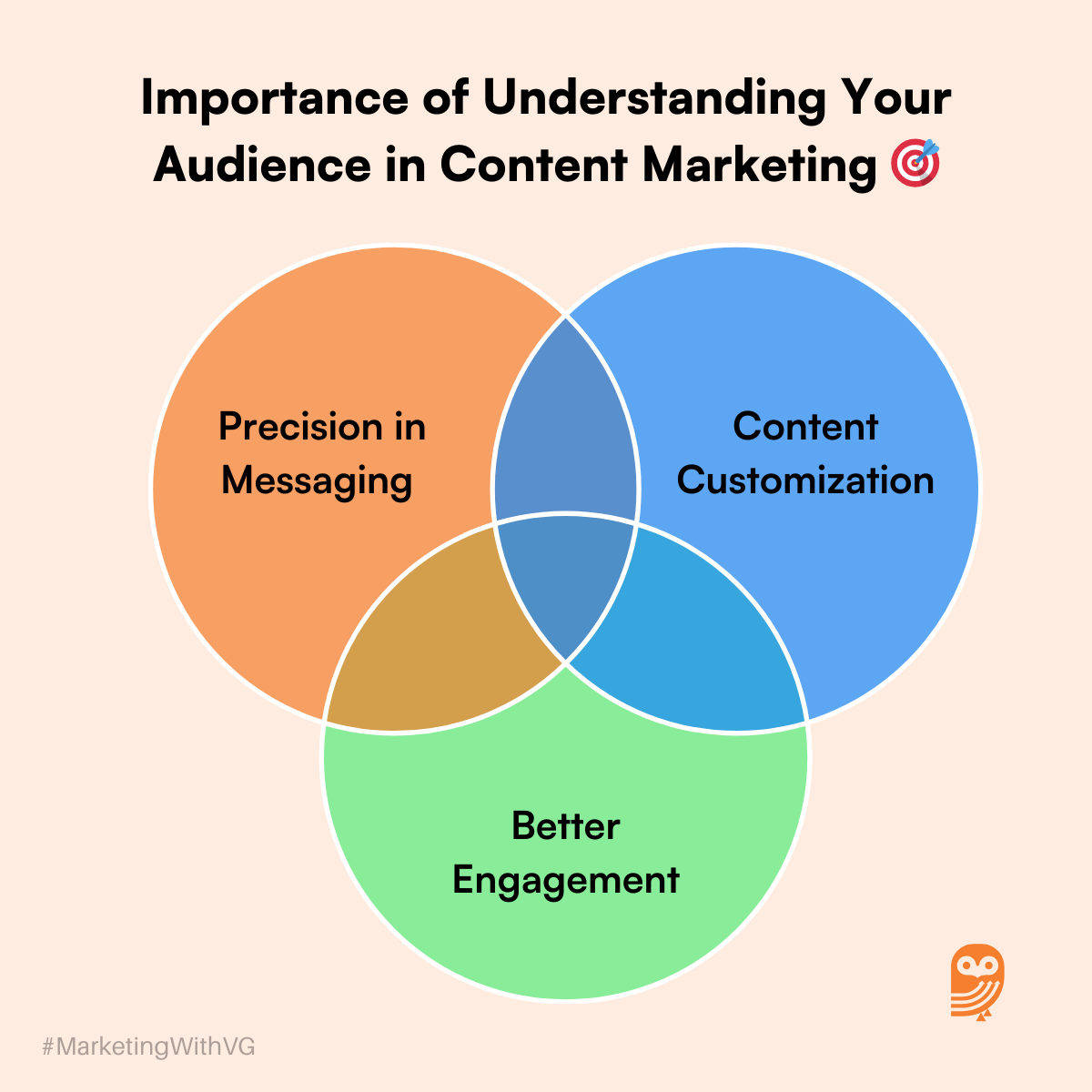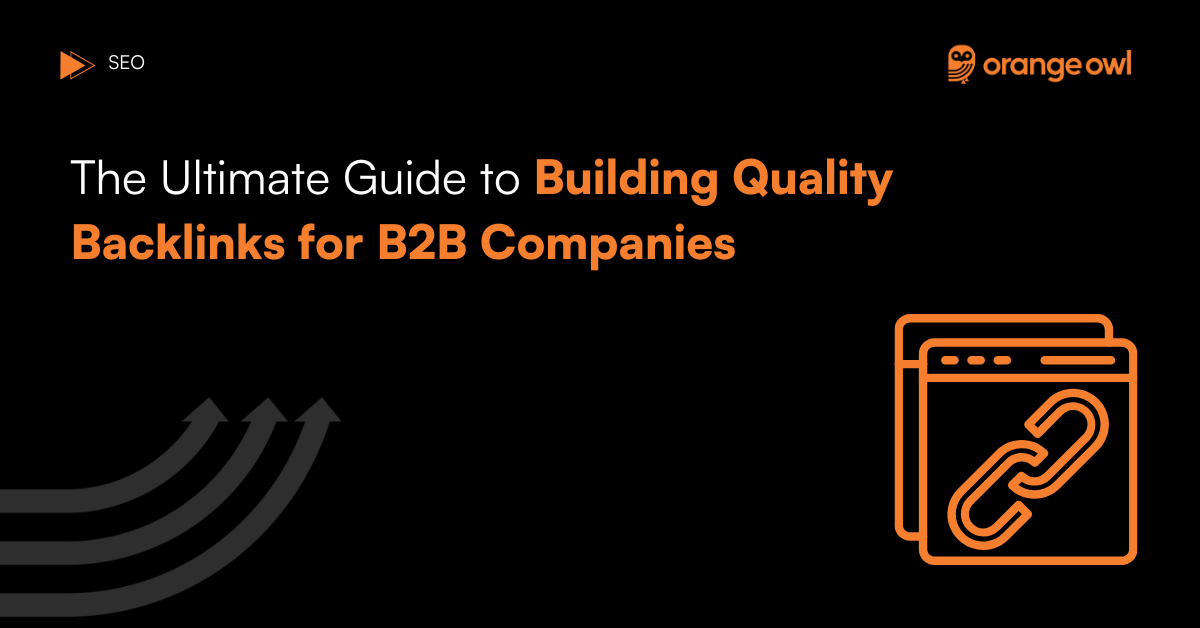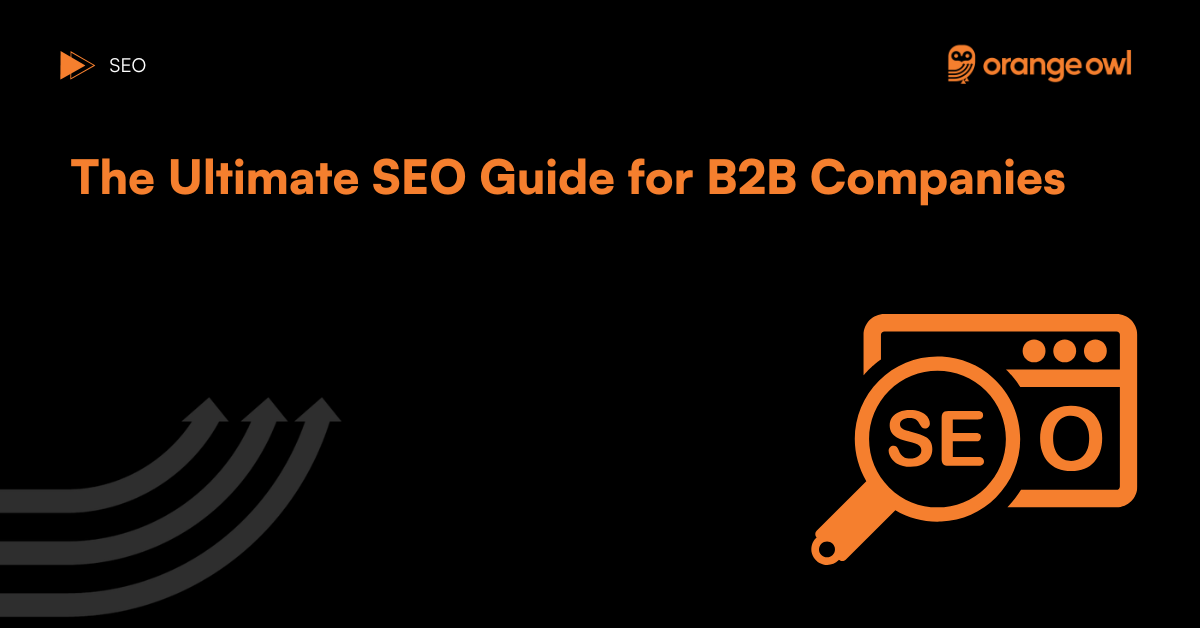Understanding Your Audience in B2B Content Marketing: A Comprehensive Guide
Vivek Goel
January 22, 2025

Table of Contents
Introduction
In the realm of B2B marketing, understanding your audience goes beyond knowing who they are—it’s about delving deep into their challenges, preferences, and behaviors to create a tailored content strategy that resonates.
This guide explores the importance of audience understanding in B2B content marketing, offering insights on how to effectively segment and engage your audience for maximum impact.
The Importance of Knowing Your Audience
The cornerstone of effective B2B marketing is a profound understanding of your audience. This knowledge allows you to craft messages that speak directly to your audience’s needs, leading to higher engagement and conversion rates.
Here’s why it’s crucial:

Tailored Messaging
Content that addresses specific industry challenges or pain points is more likely to capture attention and provoke action.
1. Software Solutions Provider:
Blog Posts: Articles on solving common software integration problems, targeted at IT professionals.
Webinars: Live sessions addressing the evolving needs of remote work software solutions, aimed at decision-makers who are accelerating digital transformation.
2. Financial Services Firm:
Whitepapers: Detailed analyses on the impact of new financial regulations on different industries, serving as a resource for compliance officers.
Email Campaigns: Targeted emails offering insights into investment opportunities in emerging markets, crafted for financial analysts.
Strategic Content Customization
Different stakeholders within a business may require varied content formats. For instance, technical professionals might prefer in-depth tutorials, whereas executives might lean towards strategic guides or industry reports.
1. Cloud Services Company:
Video Tutorials: Detailed how-to videos on migrating enterprise systems to the cloud, designed for technical staff.
Executive Briefs: Concise reports on the ROI of cloud adoption, tailored for C-suite executives to facilitate strategic decision-making.
2. Engineering Firm:
Case Studies: In-depth reviews of infrastructure projects, showcasing problem-solving for project managers.
E-books: Comprehensive guides on the latest industry standards and innovations, aimed at engineers looking for continuous education.
Enhanced Engagement
By understanding where your audience spends their time and the type of content they consume, you can optimize your content distribution across the most effective channels, whether it’s LinkedIn, industry-specific platforms, or email newsletters.
1. Marketing Agency:
Podcasts: Series featuring marketing strategies that have led to client success, relevant for marketing professionals looking to adopt new techniques.
Interactive Infographics: Visual content that breaks down campaign analytics and trends, optimized for sharing on LinkedIn where many marketers spend their time.
2. HR Consultancy:
LinkedIn Articles: Thought leadership pieces on modern HR challenges like remote team management, directly addressing HR professionals.
Newsletters: Regular updates containing tips, legislative changes, and best practices in HR, sent directly to subscribers who are HR managers and business leaders.
Steps to Effectively Understand and Segment Your B2B Audience
Segmentation is key to delivering personalized content that engages and converts. Here’s how you can get started:
Collect Demographic Data
Start with the basics—industry, company size, job role, and geographic location. This data can be gathered through CRM systems, LinkedIn analytics, and direct customer interactions.
Expert Tips: Ensure the data is current by conducting periodic reviews and updates.
Best Practices: Integrate demographic data collection into customer onboarding processes.
Tools: Use CRM systems like Salesforce and LinkedIn Sales Navigator for deeper insights into job roles and company details.
Common Pitfalls: Relying on outdated data can lead to irrelevant content delivery.
Analyze Behavioral Data
Use tools like Google Analytics or specialized content marketing software to track how different segments interact with your content. Look for patterns in content preferences, consumption times, and engagement levels.
Expert Tips: Segment your audience based on their interaction patterns and tailor content to match their engagement level.
Best Practices: Use A/B testing to see which content performs better among different segments.
Tools: Google Analytics for website behaviour; Hotjar or Crazy Egg for heat mapping user interactions.
Common Pitfalls: Overlooking mobile user behavior, which might differ significantly from desktop
Leverage Psychographic Segmentation
Understand the psychological attributes of your audience, including their values, fears, motivations, and priorities. This information can be gleaned from survey responses, customer feedback, and social media activity.
Expert Tips: Combine psychographic data with demographic insights for a more comprehensive understanding of your audience.
Best Practices: Regularly update psychographic profiles to reflect changing consumer values and expectations.
Tools: Survey tools like SurveyMonkey or Google Forms to collect customer opinions and preferences.
Common Pitfalls: Misinterpreting data due to poorly designed survey questions or biased sampling.
Utilize Technographic Data
Technographic segmentation is especially relevant in B2B settings, as it involves understanding the technologies your audience uses. This can influence the complexity of the content and the solutions you propose.
Expert Tips: Identify not just the technologies used but also the adoption rate of new technologies within target companies.
Best Practices: Tailor content formats based on the technological capabilities of your audience (e.g., interactive content for tech-savvy users).
Tools: BuiltWith and Datanyze for identifying technologies used by potential customers.
Common Pitfalls: Assuming familiarity with the latest technologies without actual data to support it.
Conduct Surveys and Interviews
Regular feedback from current and potential customers can provide direct insights into their needs and content preferences. Use these insights to adjust your content strategy accordingly.
Expert Tips: Develop a consistent schedule for surveys and interviews to keep track of changing customer needs.
Best Practices: Combine quantitative surveys with qualitative interviews to get both broad and deep insights.
Tools: Zoom for conducting interviews; Typeform for engaging, user-friendly surveys.
Common Pitfalls: Not acting on the feedback collected, leading to disengagement from participants.
Implementing Your Findings into Content Strategy
Once you have a clear understanding of your audience, integrate this knowledge into your content creation process:
Content Personalization
Develop content that addresses the specific needs and challenges of different segments. For example, create detailed user guides for end-users and industry analysis reports for decision-makers.
Expert Tips: Map content to different stages of the buyer’s journey for each segment. For end-users, focus on practical usability, while for decision-makers, emphasize ROI and competitive advantage.
Best Practices: Use persona-based content mapping to ensure all relevant topics are covered comprehensively for each segment.
Tools: HubSpot for persona-based content management and Tailor Content for personalized content creation.
Common Pitfalls: Producing generic content that doesn’t address specific segment concerns.
Channel Optimization
Distribute your content on platforms favoured by your target segments. If your analysis shows a strong preference for video content among your audience, invest in video production and distribute it through YouTube and LinkedIn.
Expert Tips: Analyze channel performance metrics regularly to adjust strategies for maximum engagement.
Best Practices: For platforms like YouTube, enhance visibility through SEO optimization of video content and engage with viewers through comments. For LinkedIn, utilize professional groups and publish articles to reach decision-makers.
Tools: Social media management tools like Hootsuite or Buffer for scheduling and analytics; TubeBuddy for YouTube SEO.
Common Pitfalls: Spreading resources too thin across too many channels without strategic focus.
Interactive Content
Engage your audience with quizzes, assessments, and interactive infographics tailored to the interests and technological sophistication of different segments. Here are more examples of interactive content for B2B Content Marketing.
Expert Tips: Design interactive content that provides immediate value, such as calculators for ROI or digital transformation readiness assessments.
Best Practices: Ensure interactive tools are easy to use and accessible across devices, providing instant results or insights that are meaningful to the user.
Tools: Tools like Outgrow for creating interactive content and ThingLink for interactive images and infographics.
Common Pitfalls: Overcomplicating the interactive elements which can frustrate users.
Conclusion
Understanding your audience in B2B content marketing isn’t just about collecting data—it’s about transforming that data into actionable insights that guide your content strategy. By thoroughly knowing who your content is for, you can create meaningful, impactful marketing campaigns that drive engagement, build trust, and foster long-term relationships.
Stay tuned as we continue to explore key elements of content marketing strategy, ensuring your efforts are not just seen but are also impactful.
Frequently Asked Questions (FAQs) about Understanding Your Audience in B2B Content Marketing
Understanding your audience in B2B content marketing is crucial because it allows you to tailor your messaging and content to meet the specific needs and challenges of your target market. This leads to higher engagement, increased trust, and ultimately, a higher conversion rate. By knowing who your audience is, what they care about, and their decision-making processes, you can create content that resonates deeply, addresses their pain points, and positions your brand as a solution to their problems.
Segmenting your B2B audience can be done by considering various factors such as industry, company size, job role, and geographic location. Advanced segmentation might include behavioral data like website interactions, product usage data, and engagement levels. This allows you to create more personalized and relevant content. Tools like CRM systems and platforms like LinkedIn Analytics provide valuable data that can help identify and segment your audience based on these factors.
Essential tools for understanding a B2B audience include:
- Google Analytics: Helps track visitor behavior on your site.
- CRM Software (like Salesforce or HubSpot): Provides insights into customer interactions and sales cycles.
- Social Media Analytics Tools (such as Sprout Social or Hootsuite): Offer data on social media engagement and demographics.
- Survey Tools (like SurveyMonkey or Google Forms): Facilitate direct feedback from your audience to understand their needs and opinions.
Reassessing your audience understanding should be a regular part of your strategy, ideally at least once a quarter. This frequency can increase depending on changes in your industry, product updates, or shifts in market conditions. Regular reassessment ensures your content strategy remains aligned with your audience’s evolving needs and preferences, maintaining or enhancing the effectiveness of your marketing efforts.
Common mistakes in analyzing a B2B audience include:
- Over-relying on assumptions without data to back them up. Always base your strategies on concrete analytics and research.
- Ignoring qualitative data, such as customer feedback and survey responses, which can provide deeper insight into the audience’s motivations and preferences.
- Failing to consider the buyer’s journey in segmentation, which can result in content that does not address the specific needs of the audience at different stages of their decision-making process.
- Not updating the audience personas as the market evolves, which can lead to outdated strategies that no longer resonate with your target market.


